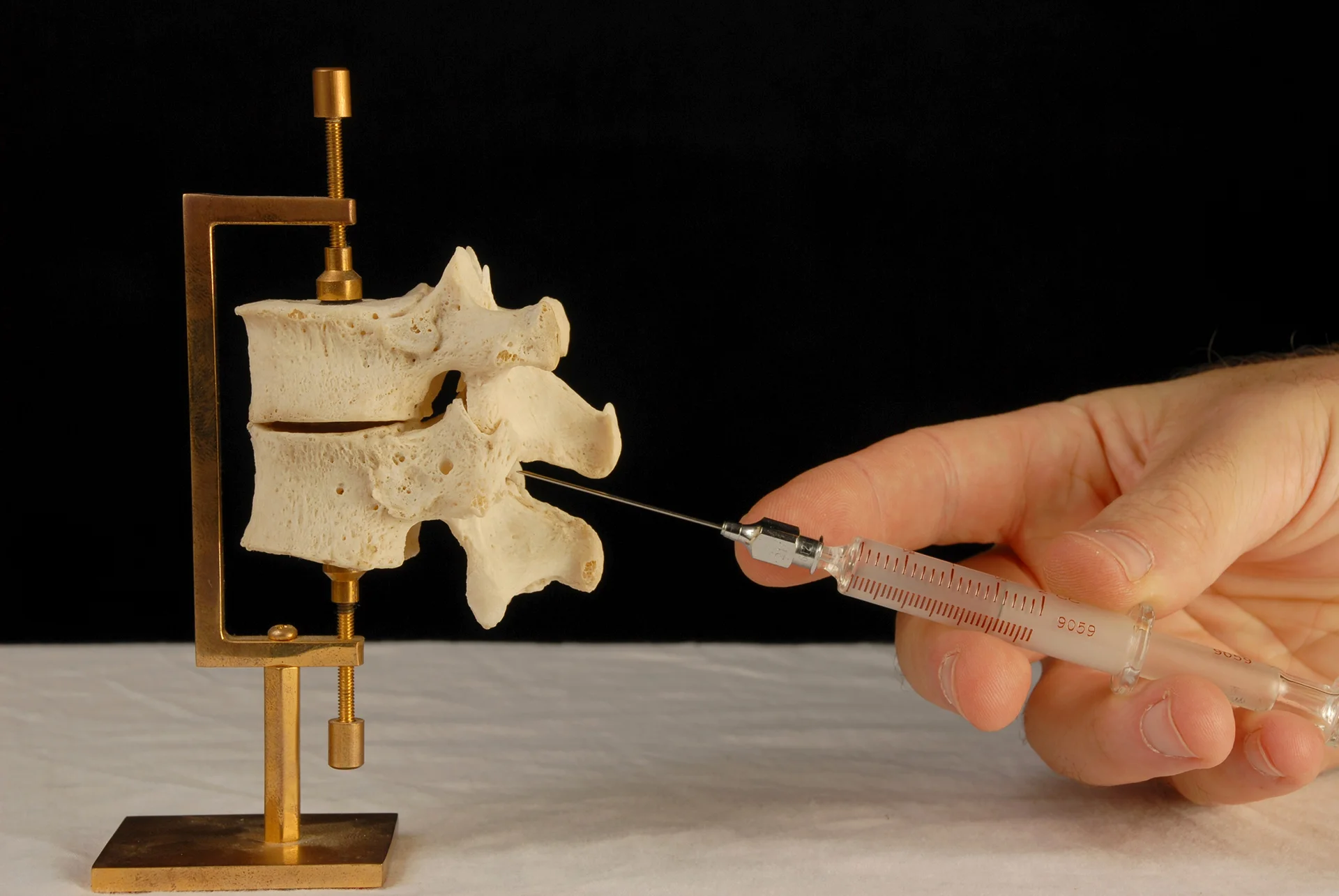Experience Life Without Chronic Neck Pain Again
If you’re suffering from chronic neck pain that just won’t go away, you know how debilitating it can be. The constant aching and stiffness can make it difficult to move your head and upper body normally. This pain can radiate down into your shoulders, arms and back too, severely limiting your mobility and quality of life.
You may have tried various treatments like painkillers, physical therapy, massage, and more. But if you’re still living with chronic neck pain, an epidural steroid injection may be the answer. This minimally invasive procedure can deliver powerful anti-inflammatory medication right to the source of your pain for lasting relief.
Keep reading to learn everything you need to know about using epidural injections to treat chronic neck pain.
Chronic Neck Pain: Causes, Symptoms and Treatments

Neck pain refers to any discomfort, tightness or stiffness felt in the cervical area of the spine. It’s considered chronic when it persists for 12 weeks or longer. Some common causes include:
| Cause | Description |
| Muscle strain | Prolonged poor posture such as hunching over a computer or looking down at a phone strains the neck muscles and ligaments. Repetitive movements or whiplash injuries from car accidents can also strain the neck over time. |
| Herniated discs | Discs between the vertebrae can bulge or rupture, putting pressure on nearby nerves and causing pain. This is more common with age as discs lose elasticity. According to studies, this condition occurs more frequently in females, accounting for more than 60% of cases, than in males. |
| Spinal stenosis | Narrowing of the spinal canal that houses the spinal cord due to conditions like bone spurs or disc herniation. This presses on the spinal cord and nerves. |
| Degenerative disc disease | Discs lose flexibility and shock absorption with age. Cracked, damaged discs can irritate nerves. |
| Arthritis | Osteoarthritis and rheumatoid arthritis (RA) that affect the cervical spine and facet joints can lead to chronic neck stiffness and soreness. According to a study, the recent estimates show that 80% of patients with RA have radiographic cervical spine involvement. |
The pain may be localized in the neck or radiate into shoulders, arms, hands or head. Other symptoms can include:
- Numbness or tingling in the arms or hands
- Reduced range of motion when turning or bending the neck
- Muscle spasms or tightness in the neck and shoulders
- Headaches triggered by neck pain
- Clicking, popping or grinding noises when moving the neck
Kaly Links You to Medical Experts Who Can Provide Insights into Neck Pain Causes & Treatments. Sign Up Now!
Common Treatments for Neck Pain
Neck pain can be uncomfortable and debilitating. Fortunately, there are several treatment options available to find relief. The most common treatments for neck pain include:
Over-the-counter pain medications
Nonsteroidal anti-inflammatory drugs (NSAIDs) such as ibuprofen or naproxen can help reduce inflammation and ease neck pain. Muscle relaxers may also be used to relieve muscle spasms and tension.
Heat and ice packs
Applying heat or ice to the neck can help relax the muscles and relieve stiffness and pain. Heat packs can loosen tight muscles while ice packs can numb pain.
Physical therapy
Specific exercises can help strengthen the muscles in the neck and improve range of motion. A physical therapist can recommend an exercise routine tailored to the individual.
Lifestyle modifications
Improving posture, lifting techniques, and ergonomics can remove strain on the neck and prevent pain from worsening. Using supportive pillows and proper headset positioning can also help.
Alternative therapies
Some find relief from alternative treatments like massage, acupuncture, or chiropractic adjustments. More research is still needed on their efficacy.
Surgery
In rare, severe cases when other treatments fail, surgery may be required depending on the cause. This is usually seen as a last resort option.
The key is finding the treatment or combination of treatments that provides the most relief.
Sign Up for Kaly to Discuss Your Symptoms with Doctors and Determine Your Best Treatment Options
How Epidural Injections Relieve Neck Pain at the Source

An epidural steroid injection is a minimally invasive procedure that delivers anti-inflammatory steroid medication directly into the epidural space surrounding the spinal cord.
For neck pain, the injection is administered in the cervical region of the spine. The medication relieves irritation and swelling affecting the nerve roots, allowing them to heal.
According to a 2022 study, cervical epidural injections have been effective in the treatment of neck pain for 71% of patients.
Most chronic neck pain is caused by inflammation compressing or irritating the cervical spinal nerves. This triggers pain signals. Epidural steroid injections deliver powerful anti-inflammatory corticosteroid medication right to the source. This reduces the swelling and takes pressure off the irritated nerves.
Benefits of Epidural Injections for Neck Pain
When oral medications, physical therapy and other conservative treatments fail to provide lasting relief from chronic neck pain, cervical epidural injections offer a safe and effective solution. Benefits include:
- Significantly reduces neck, shoulder and arm pain caused by pinched cervical nerves
- Improves range of motion allowing you to move your neck and upper body more freely
- Relieves associated headaches
- Avoids risks and long recovery of spine surgery
- Covered by insurance – more affordable option than other interventions
- Virtually painless outpatient procedure
- Short recovery time
For many people with disc herniations or bone spurs irritating cervical nerve roots, epidural injections offer life-changing pain relief.
What to Expect During a Neck Pain Epidural Injection
Wondering what it’s like to actually get an epidural injection for neck pain? Here are the basic steps:
| Stage | Description |
| Before the Injection | Your doctor will discuss your medical history and exam findings to ensure you are a candidate. You’ll be asked to sign a consent form confirming you understand the potential risks and benefits. Arrange for a driver to take you home as you will be numb for a few hours after. |
| During the Procedure | You’ll either sit upright or lay on your side curled up in a ball. The injection site is sterilized and numbed with local anesthetic. Using x-ray guidance, the doctor inserts a small needle into the cervical epidural space. Contrast dye may be injected to ensure proper needle placement. The steroid medication is then slowly injected. You may feel some pressure. The procedure takes less than 20 minutes. |
| After the Injection | You’ll rest for about 30 minutes before going home. Take it easy for 2-3 days to allow the medication to work. Use ice packs to reduce localized discomfort and inflammation. Pain relief can take up to 1-2 weeks to fully kick in. Schedule a follow up visit with your doctor. |
Preparing for a Neck Pain Epidural Injection
If your doctor determines you are a candidate, make sure you prepare properly. Here are some tips:
- Have someone drive you to and from the procedure.
- Take medications as prescribed by your doctor before and after.
- Wear loose comfortable clothing with easy access to your neck.
- Arrive early to fill out any necessary paperwork.
- Follow all pre-procedure instructions carefully.
- Have ice packs ready at home to use afterward.
Proper preparation can help ensure the best results from your cervical epidural injection.
Recovering after a Neck Pain Epidural Injection
Be sure to follow your doctor’s instructions for recovering safely after the procedure. In general:
- No driving or physical activities for at least 24 hours.
- Take it easy the remainder of the day after the injection.
- Use ice packs on your neck to reduce swelling.
- Keep the injection site clean and dry.
- Slowly resume normal activities over the next couple days.
- Avoid lifting anything over 10 pounds or strenuous exercise for at least a few days.
- Report any worrisome side effects like severe headache or fever promptly.
- Keep follow up appointments so your doctor can check your progress.
Properly caring for yourself after the injection allows the medication to work and the procedure to be as effective as possible.
Get Long-Lasting Neck Pain Relief with Kaly

If you’re suffering from chronic neck pain, Kaly can help. Our network of top spine specialists and pain management doctors have successfully treated thousands of patients with epidural steroid injections.
Schedule a free consultation with a Kaly neck pain specialist and find out if a cervical epidural injection is right for you. Our doctors will review your MRI and medical history to determine if you are a candidate.
Kaly handles everything from initial appointment scheduling to follow up care. Sign up today to make the process easier!
Answering Key Questions about Epidural Injections for Neck Pain
If you’re thinking about having an epidural steroid injection to treat persistent neck pain, chances are you still have some questions and concerns. Let’s cover some of the key issues:
Are There Serious Risks with Cervical Epidural Injections?
Cervical epidural risks are low. Mild side effects may include localized pain, numbness, or dizziness. Rare serious risks include bleeding, infection, nerve injury, allergic reaction, or bladder issues. However, when performed by an experienced doctor under imaging guidance, risks remain minimal compared to potential pain relief benefits.
How Long Does the Pain Relief from an Epidural Injection Last?
Pain relief from a cervical epidural injection can last 6-24 months on average. Some get longer relief. If pain returns after 6 months, another injection may help. Key is weighing risks versus benefits of repeat injections based on your response.
How Many Cervical Epidural Injections Are Needed?
The number of cervical epidural injections needed varies. Some get lasting relief from one, others may need a series of 2-3 spaced 6 months to 1 year apart. More severe conditions may need more injections before considering other options. Your doctor will determine the appropriate number based on your response.
Who is a Good Candidate for a Cervical Epidural Injection?
Good candidates for cervical epidural injections have chronic neck/arm pain from herniated discs, spinal stenosis and irritating nerves. Ideal candidates have tried other treatments without success and have imaging showing the cause. Those most likely to benefit include those with herniated discs, bone spurs, spinal stenosis, radiculopathy in the cervical spine. Talk to your doctor.
